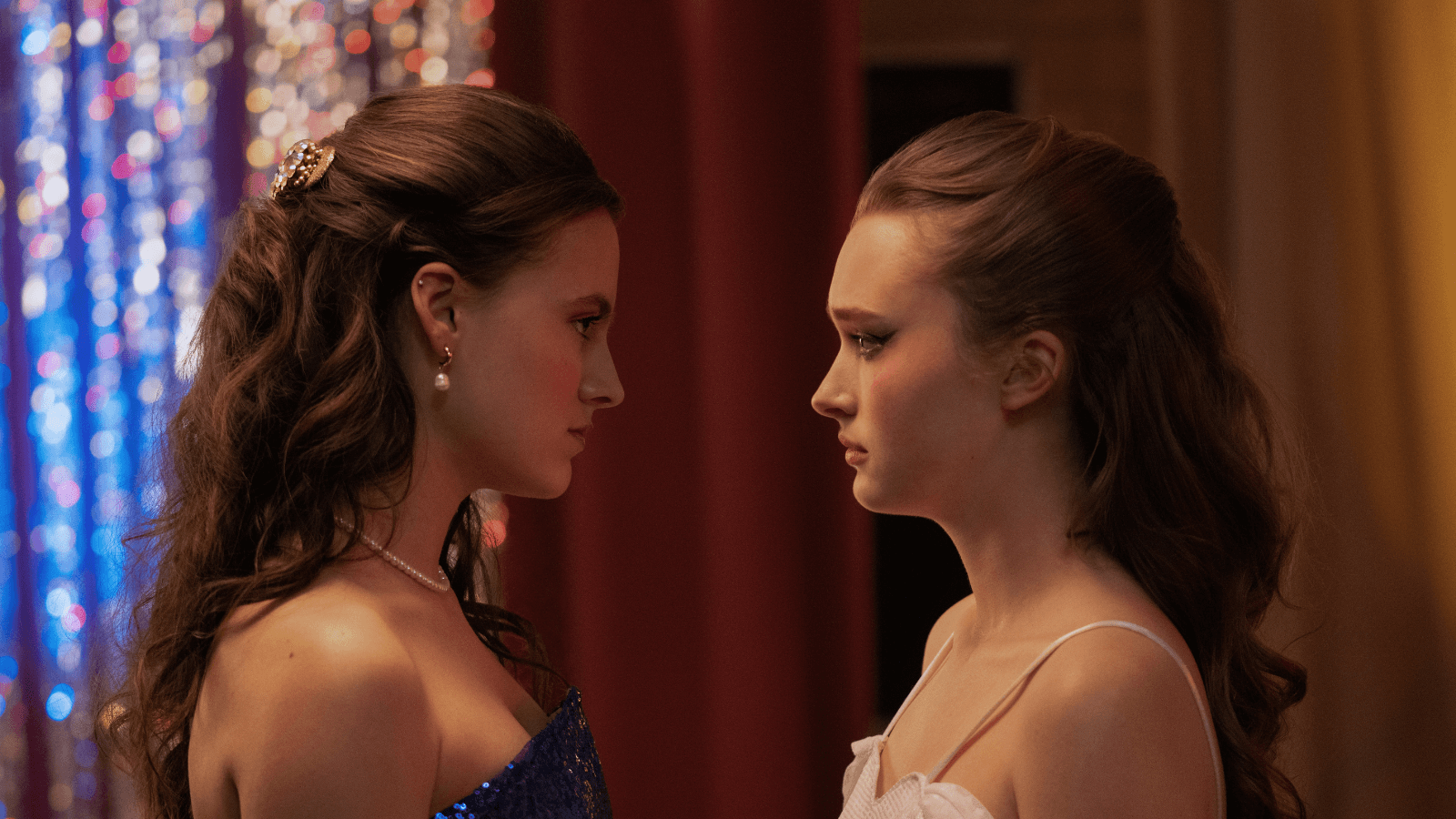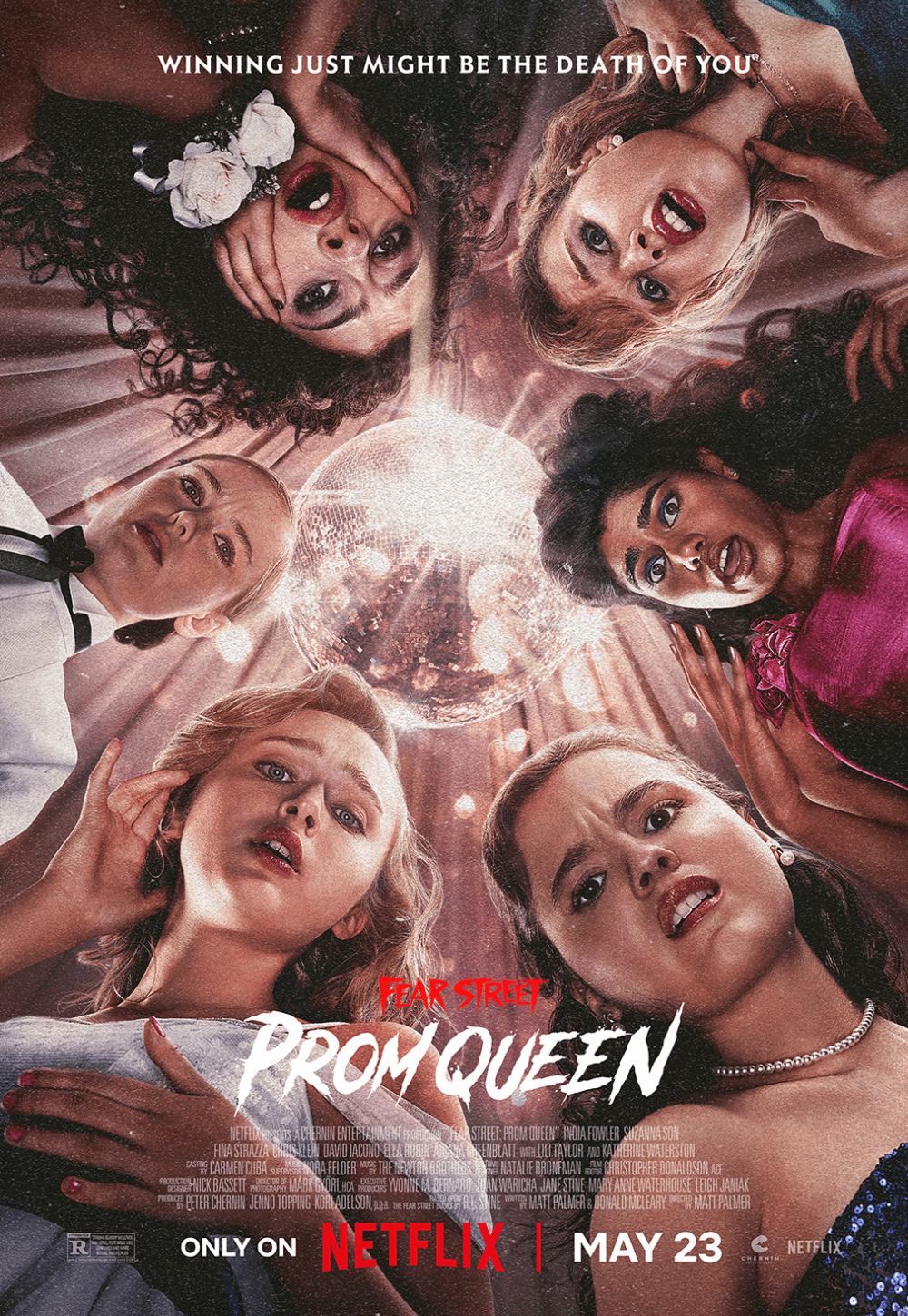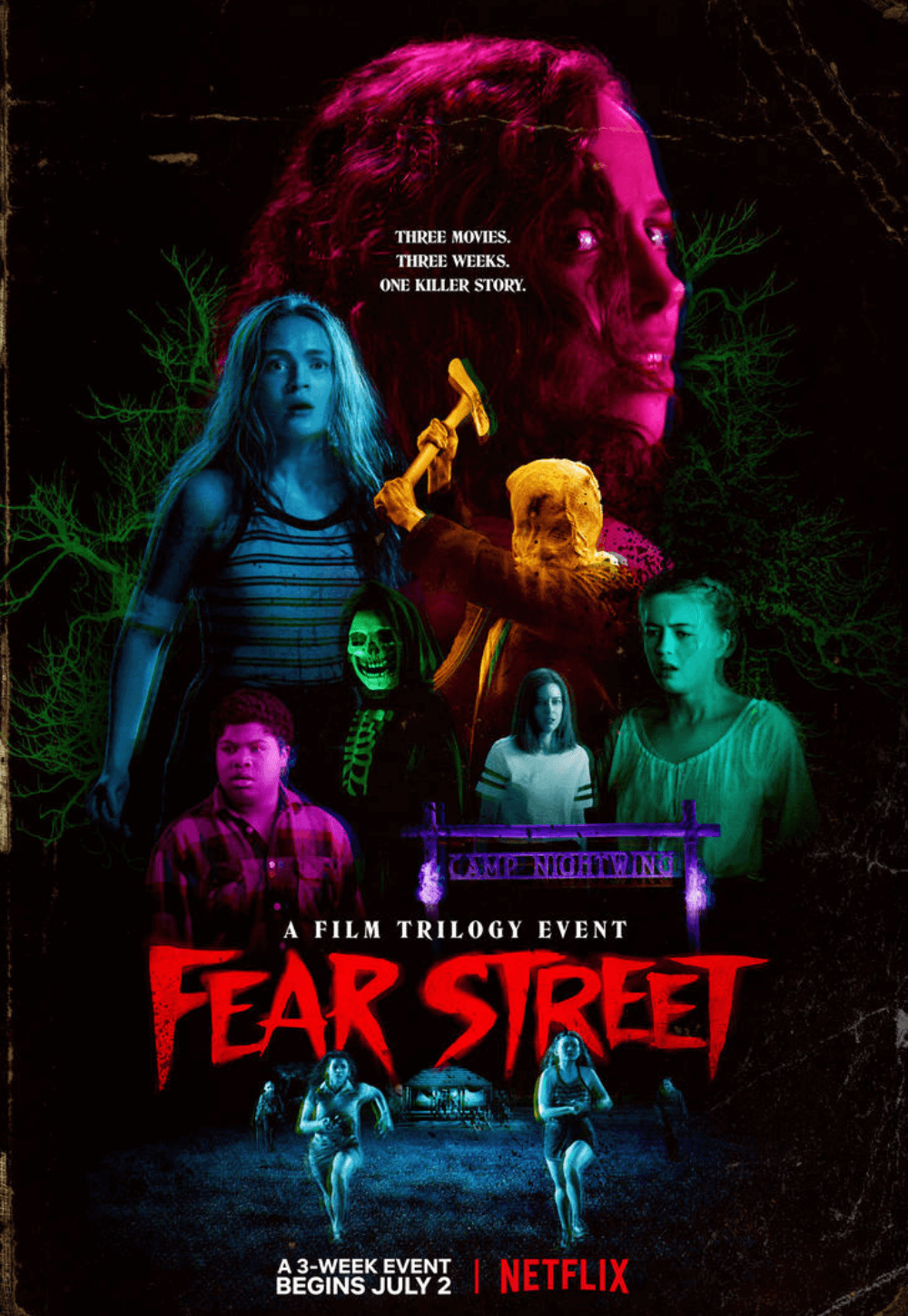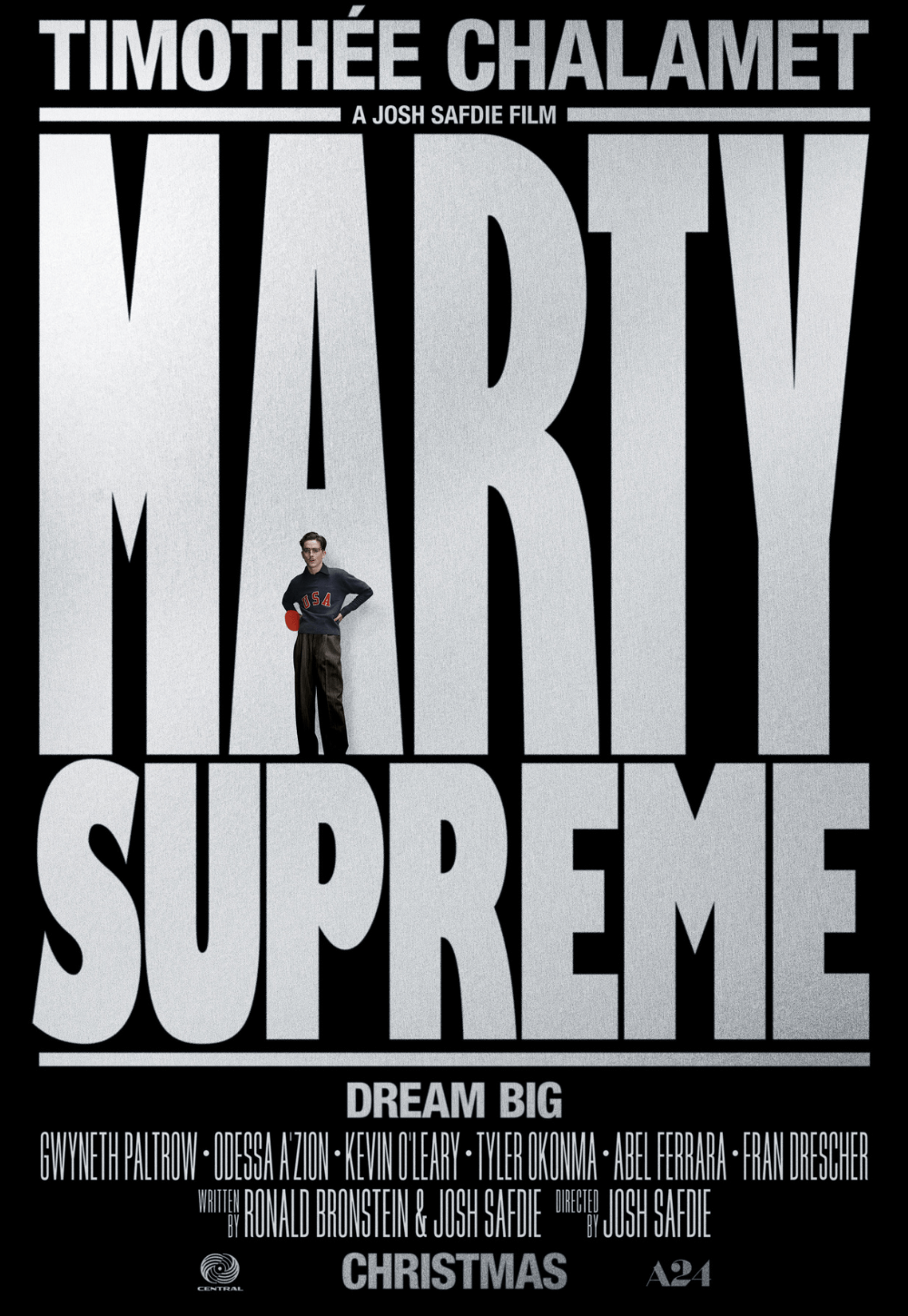
Fear Street: Prom Queen
By Brian Eggert |
In the summer of 2021, during the heart of the pandemic, Netflix dropped three interconnected movies inspired by R.L. Stine’s Fear Street series of horror-centric books for teens and young adults. The movies—1994, 1978, and 1666—ranged from slasher thrillers to folk horror paranoia and arrived on a one-per-week cadence. At the time, they provided a welcome escape from the world outside and something to look forward to over three weeks. They’ve since become favorites in my household, with my wife (a devoted fan of the books) and me revisiting them about once a year. They’re far from perfect and rely on pastiche perhaps too much, but they’re high-energy, populated by a talented young cast, and thoughtfully constructed as a trilogy. Above all, they’re enduringly fun to watch. Fortunately, Netflix continues its embrace of Stine’s books for streaming fodder with Prom Queen, another entertaining, bloody, fast-paced slasher in the Scream-brand whodunit mold.
Although the 2021 trilogy borrowed ideas from several Stine books to craft something altogether new, screenwriters Matt Palmer and Donald McLeary adapt an actual book—the author’s 1992 release, The Prom Queen. While I cannot comment on the faithfulness of their adaptation, the movie recalls many others in this subgenre of prom bloodbaths. The most notorious of them must be Carrie (1976), based on Stephen King’s book and directed to perfection by Brian De Palma, which ends in a blood-soaked, fiery night of terror. It’s all downhill from there. Neither the Jamie Lee Curtis starrer Prom Night (1980) nor its equally lame 2008 remake could be called classics. But the unrelated sequel, Hello Mary Lou: Prom Night II (1987), is a batshit-crazy Canadian production that deserves its cult following. So do Prom Night III: The Last Kiss (1990) and Prom Night IV: Deliver Us from Evil (1991).
The list of prom-themed slashers could go on, but we’re here to discuss Fear Street: Prom Queen. Directed by Palmer with a sure hand, the movie takes place in Shadyside, Stine’s fictional cursed town, where the main exports are murderers and psychopaths. The year is 1988, meaning the soundtrack pops with nostalgic hits and an excellent synth score by the Newton Brothers, Mike Flanagan’s regular composer duo. At Shadyside High, the girls read Sassy magazine, hang Billy Idol posters on their walls, and wear acid-wash jeans. And everyone’s talking about who will be this year’s prom queen. Our hero, Lori Granger (India Fowler), comes from a family whose name is synonymous with murder—her father was killed many years ago, and her mother was accused of the crime yet absolved of any wrongdoing. But the stigma never cleared. Lori remains a punching bag for the so-called Wolf Pack, a group of mean girls headed by the popular, superficial, and cruel Tiffany Falconer (Fina Strazza).

In the days leading to Shadyside’s prom, a killer in a black mask and red vinyl getup begins slaughtering the prom queen candidates one by one, often in a dark, secluded area of the school. Palmer also shows us the killer at a workbench and disposing of evidence in a basement furnace. The screenplay establishes plenty of red herrings. Could it be the creepy janitor who leers at female students? The religious zealot assistant principal (Lili Taylor) with an oppressive moral code? The hotheaded teacher, played by Chris Klein, who returns to a high-school setting after 1999’s Election and American Pie? The prissy mother (Katherine Waterston) who wants her daughter Tiffany to take home the tiara? As we ask these questions, Palmer deploys one memorable death scene after another, with the killer wielding the school’s paper cutter and circular saw in particularly nasty moments—albeit reliant on CGI viscera.
Palmer’s direction doesn’t match the propulsive energy or humor of the earlier Fear Street trilogy. Those were helmed with style and momentum by Leigh Janiak, who serves as an executive producer here. Prom Queen also struggles to land a few key elements and moments under Palmer’s direction. The brief falling out between Lori and her amusingly rebellious best friend Megan (Suzanna Son) lasts about two minutes and feels like an obligatory second-act conflict that’s quickly resolved. There’s also a baffling, overlong, and ineffective dance-off sequence between Lori and Tiffany set to Laura Branigan’s 1982 disco hit “Gloria,” where the dancing can only be called unintentionally (?) strange, like a jellyfish dancing opposite an extraterrestrial robot. Where Prom Queen succeeds is keeping the viewer invested in Lori’s hope for a fairy-tale escape from Shadyside, should her dream of becoming prom queen come true. The filmmakers also drop a memorable kill every few minutes, maintaining the balance of teen drama and slasher thrills.
The question of who’s behind the mask isn’t much of a mystery. As is sometimes the case with whodunits, the culprit can be guessed by the casting alone. Why else would that popular or prestigious performer be cast in such a seemingly negligible role? Otherwise, the casting is generally good, particularly Fowler. The odd thing is how the young cast looks like—and in some cases are—actual teenagers. If the filmmakers wanted to cast for period accuracy, they would have gone with older actors. Look at real prom photos from the ’80s; everyone looks like they’re in their thirties. Anyway, even though I predicted the outcome in the first half hour, that didn’t rob Prom Queen of its simple pleasures, which work well at home for a late-night viewing. This is a fun movie, and a welcome addition to the series. I hope Netflix continues making Fear Street movies. With over 50 Fear Street books at their disposal, the potential to keep going with these streaming features—either individually or interconnected in terms of story—leaves plenty of options for filmmakers and much to anticipate for horror fans.

Thank You for Supporting Independent Film Criticism
Thank you for visiting Deep Focus Review. If the work on DFR has added something meaningful to your movie watching—whether it’s context, insight, or an introduction to a new movie—please consider supporting it. Your contribution helps keep this site running independently.
There are many ways to help: a one-time donation, joining DFR’s Patreon for access to exclusive writing, or showing your support in other ways. However you choose to support the site, please know that it’s appreciated.
Thank you for reading, and for making this work possible.
Brian Eggert | Critic, Founder
Deep Focus Review





